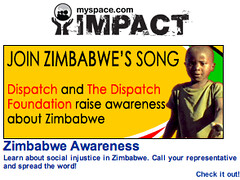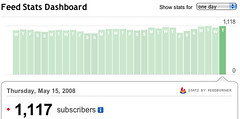The evolution of marketing after search
Search changed everything.
In the world of advertising, before there was search, there was only interruption. Put as many ads as possible in as many places as possible in the hopes that when a consumer needed something, your ad would be there and they’d think of you first. Spend a fortune on brand so that when a consumer had a problem that your brand could solve, they’d choose you. During the pre-search age, this strategy worked, largely because there was no opportunity for anything better.
Enter search. Search allowed consumers to indicate what they were interested in. Search allowed advertisers to know when a consumer was in the mood to buy, or at least in the mood to shop. Suddenly, instead of paying millions of dollars for impressions, advertisers could pay thousands of dollars for clicks, and the quality of the leads was better because the consumers had self-selected themselves as interested parties.
So here we stand. Search rules the roost. Google’s fortunes are built on it, and everyone is trying to improve search or improve placement in search.
Here’s the fundamental question: what comes next? Does search just get better, or is there a quantum leap that changes the game as much as search changed the game?
I believe there is a change ahead, and we can already see it in various threads. It hasn’t come together yet, but it’s there and happening faster than you think.
Predictive placement.
You see, we know a lot of information. TONS of information. Consumers self-publish information in volumes that marketers could never accomplish. All of MySpace, all of Facebook, all of Twitter – all of this is self-published data, most of it public.
Right now, we don’t yet have the computational capacity to do massive data correlation on an economical scale, though if I had to place a bet, I’d put my money on Google to do it first. Think about what that future might look like, though. We know products and services have seasonality, and we already have some data segmentation capabilities. Massive data correlation will let us aggregate all the consumer self-published data and slice it a billion different ways to determine what customers want, and when.
Consider what massive data correlation might mean – a 19 year old female customer logs into, say, a superstore online, and signs in with their Facebook key (just as you do now with Facebook apps). Instantly, the superstore correlates the data in their Facebook profile with the megadatabase and knows that this consumer, who likes Phish, Liz Phair, CSI, and Lost, and is from the North Shore of Massachusetts is statistically likely, based on thousands of similar customer records, to want and need a student loan in three months’ time. Based on their demographic and psychographic data, the megadatabase knows that statistically, this consumer will probably need to borrow between 12,500 and14,300 in two increments, and based on previous purchase data, they’re likely to need their loan disbursements in the first week of September and the fourth week of January.
The megadatabase makes these notations in a customer profile, sets reminders, and on the first Tuesday of September, Facebook, in concert with the superstore, sends the consumer a message offering them a student loan for $13,000 that can be disbursed by the Friday of that same week – because in the background, the megadatabase has already secured pre-approvals. The consumer is amazed and delighted that Facebook and the superstore knew exactly what they needed, exactly when they needed it, and instead of having to choose a lender, they just go with the lender that was there at precisely the right time with precisely the right offering. The advertisement will not seem out of place, either – because it’s precisely timed, it will appear to be content, just as now, an ad for a service that you need is content, not an ad.
Sound farfetched? In the age of Google, in the age of social networking profiles with copious data, that day is much closer than you realize.
Welcome to the future, where marketing is there for exactly what your wallet can bear, with exactly what you want, to take advantage of the buying impulse the moment you have it – all backed up by massive databases.
Did you enjoy this blog post? If so, please subscribe right now!



Get this and other great articles from the source at www.ChristopherSPenn.com
 It means that flash cash for new media is dwindling fast. Companies can’t afford Bubble 2.0 any more.
It means that flash cash for new media is dwindling fast. Companies can’t afford Bubble 2.0 any more.










 I had the privilege of attending and presenting at the
I had the privilege of attending and presenting at the 

